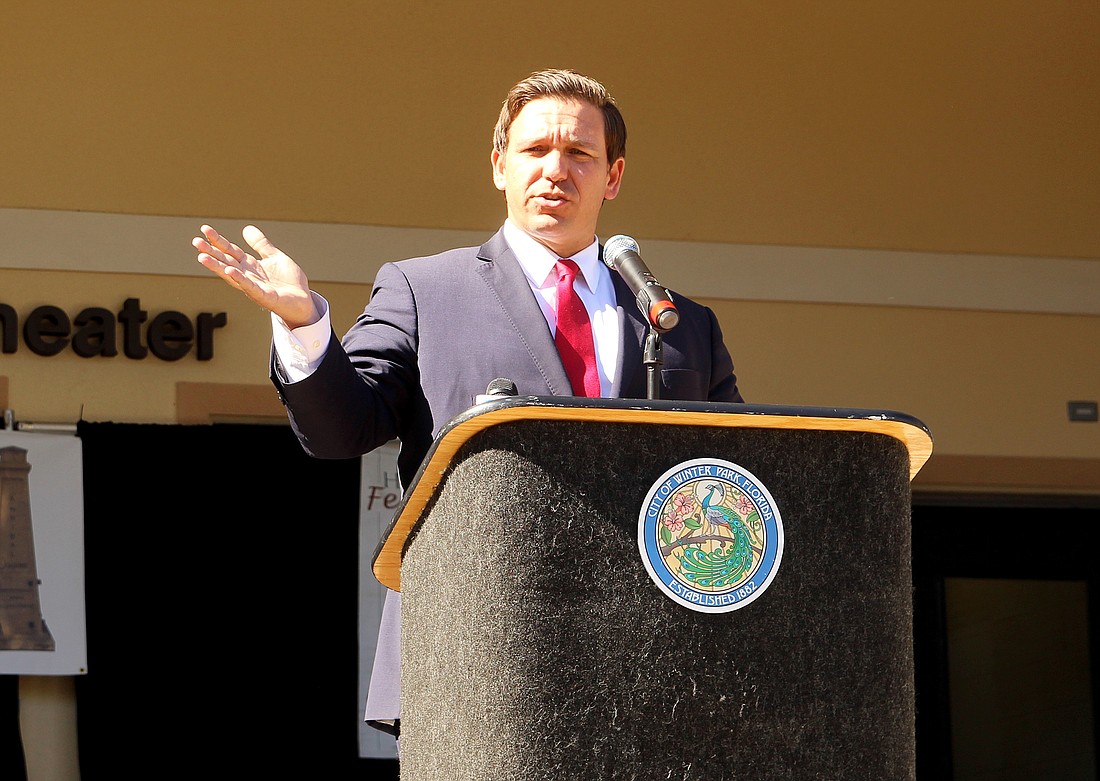- April 18, 2024
-
-
Loading

Loading

Despite the number of COVID-19 cases growing statewide, Orlando Health physicians say the median age is skewing younger and hospital capacity is not currently a concern in Central Florida.
During a press conference at Orlando Health Tuesday, June 23, Florida Gov. Ron DeSantis spoke with the physicians about their perspective on the rise in positive case numbers.
The conference occurred less than 24 hours after state officials suspended a UCF-area bar’s liquor license due to a failure to abide by proper social-distancing measures and other terms of the state’s Phase 2 reopening guidelines.
DeSantis addressed the suspension during the press conference, stating that businesses that flagrantly do not comply with COVID-19 guidelines will be subject to similar consequences.
“If you go in and it’s just like mayhem, like ‘Dance Party USA’ and it’s packed to the rafters, that’s just cut and dry and that’s not just an innocent mistake,” DeSantis said. “(There’s) no tolerance for that. Just suspend the license and then we’ll move on.”
In other coronavirus news, DeSantis said the median age of positive cases in Orange and Seminole counties has dropped to 32. Some of that, he said, could be attributed to more widespread testing compared with the testing that occurred in March.
“In March, testing was really limited to people symptomatic and those 65 and older,” DeSantis said. “Now we’re in a situation where if you identify a potential cluster, you can just go test people and we have the capacity to do it. I do think that that infrastructure is very important to have in terms of the testing.”
Despite the fact that there is more testing, he added, the test results still are coming in with a higher positivity rate than before. Orlando Health physicians believe that is due in part to more social interaction and widespread transmission.
“I think the community needs to think about what the risk really is,” said Dr. George Ralls, an Orlando Health physician. “Where we’re letting our guard down are the pool parties or social gatherings or the places we’re not thinking about social transmission. … Our testing is much, much broader than it was during the first wave. What we’ve seen in our percent positive rates looks exactly like what we’re seeing the community. It really has to do with the fact that there’s been more widespread community transmission.”
DeSantis and Orlando Health staff also addressed concerns regarding hospital capacity and other factors that may be contributing to rising COVID-19 numbers.
Ralls confirmed that hospital census has increased in the last month as patients begin to return for elective surgeries and health care they’d been putting off when the pandemic began. A normal hospital capacity lies in the neighborhood of 85 to 90%, said Dr. Sunil Desai, another Orlando Health physician. Many hospitals were running around 60% capacity during the shutdown, but Orlando Health has seen “pent-up demand with elective surgeries and care,” Desai said.
“Not only do we have capacity to take care of all our community and patients, but we have not even tapped into the surge capability should we ever need that,” Desai said. “That’s 30% to 40% bed capacity above our base.”
Desai added that while the COVID-19 population now is skewing younger — between ages 30 and 55, he said — the acuity of symptoms presented also has changed.
“The acuity is less — a lot less folks requiring mechanical ventilation or the severe presentations of COVID-19,” Desai said. “We’re not seeing as much of that. “I think we are beginning to understand how to treat this disease, recognizing it in a better fashion and modifying as we go the various treatment regiments. Our peak was in April — of about 54 patients, almost 50% required mechanical ventilation. As of today, (we have) about 108 patients, with three on ventilators. It’s a significant drop in acuity.”